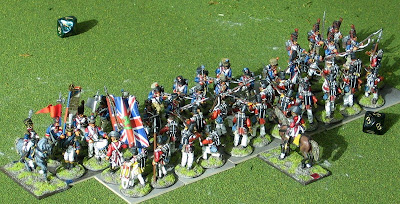The Trireme is about 6 1/2 inches long - counting the ram. It's the smallest of the larger ships - which include the Quadreme, Quinquereme, and the flagship Hexeres. The Hexeres is just shy of 9 inches long.
Here's the sheet of the Trireme - the larger ships have one ship per sheet. The smaller ones have three to four to a sheet. There is a list of tools needed for construction. I used a hobby knife (new blade), cutting mat, scissors, and a metal straight edge (actually a sheetmetal piece to be used as a movement tray). I also used Elmer's White Glue, watered down and applied with a small brush, for gluing the parts together.
 Here are the parts cut out. A straight edge was used for most of the cutting. A pair of scissors was mainly used for the deck, which is a bit curved. A hobby knife was used for cutting the curved bow and stern of the ship. There are optional parts for the inside of the ship which I didn't print out. I think I'll add them to the larger ships. There are towers & commanders tents, as well as Corvus for larger ships, which again I didn't print out.
Here are the parts cut out. A straight edge was used for most of the cutting. A pair of scissors was mainly used for the deck, which is a bit curved. A hobby knife was used for cutting the curved bow and stern of the ship. There are optional parts for the inside of the ship which I didn't print out. I think I'll add them to the larger ships. There are towers & commanders tents, as well as Corvus for larger ships, which again I didn't print out. This photo shows the the parts with tabs needing folding. As recommended in the instructions, I used a dull-blade (butter knife) to crease the folds.
This photo shows the the parts with tabs needing folding. As recommended in the instructions, I used a dull-blade (butter knife) to crease the folds. Outrigger ready for attachment to the underside of the deck protrusion. This is the trickiest part of the gluing process. You need to ensure all the tabs are lined up, especially the two end folds. Not at all hard though.
Outrigger ready for attachment to the underside of the deck protrusion. This is the trickiest part of the gluing process. You need to ensure all the tabs are lined up, especially the two end folds. Not at all hard though. Oars attached to the inside of the outrigger.
Oars attached to the inside of the outrigger. Trireme completed, less optional items like inner panels, sails, and towers. These can be placed on later. It will also need to be mounted on a movement stand. Now that I know the hands on process, the rest of the fleet should be put together a little faster.
Trireme completed, less optional items like inner panels, sails, and towers. These can be placed on later. It will also need to be mounted on a movement stand. Now that I know the hands on process, the rest of the fleet should be put together a little faster.























